
New RockShox shocks for 2011
The RockShox 2011 product launch in Durango, Colorado saw the unveiling of a number of interesting new products. The first one I profiled was the Reverb height-adjustable seatpost.
That wasn’t the only big news from RS for ’11, though. The other big unveilings at this high-altitude mountain biking oasis were the Vivid Air World-Cup level downhill air shock, an updated Vivid Coil shock and a new all-mountain version of the Monarch short-travel rear shock.
Clockwise from the top: the Vivid Air, Vivid Coil R2C, the Monarch Plus and the Vivid Coil R2
Vivid Air rear shock
The new Vivid Air shock was built to meet the demands of World Cup downhill racers who are looking to lose the weight of a coil spring without sacrificing the performance they get from a coil shock. It was intended to play well with the Boxxer World Cup air fork, which until now, usually found itself paired up with a compatriot of less-than-equal calibre.
This isn’t the first air shock designed for DH racing – Fox’s DHX Air shock has been around for several years – but RockShox took a markedly different approach to design with the Vivid Air. RockShox is alsos hoping to find widespread adoption where Fox only got a somewhat lukewarm reception from the DH racing scene.
The Vivid Air mounted on an Ibis Mojo. It looks like a big shock, but the canister diameter sn’t any larger than a coil spring.
Vivid Air has been in development for more than two years, and it incorporates a bunch of new technologies to optimize performance for the extreme demands of World Cup DH racing. It also addresses two of the big knocks against air shocks in this application: their tendency to ramp up at the end of the stroke, and spring and damping rates that change as operating temperatures in the shock increase.
In a “traditional” air shock with a smaller single canister, air has nowhere to go as it gets compressed. The result? The shock ramps up as it moves through its travel. The Air deals with this problem with the all-new Twin Tube Solo Air spring, which is specifically designed to provide optimal performance and heat management.
The Vivid Air’s Twin Tube Solo Air spring design is a self-adjusting system that swaps air between positive and negative chambers, like a Boxxer World Cup fork. There are two air chambers located inside the high volume, 58mm-diameter air canister. Air in the larger inner chamber is forced into (and drawn out of) the outer chamber through a series of small openings as the shock moves through its travel. This effectively gives the air inside the shock more room to expand, and gives it a linear feel. Different shim stacks inside the shock can also be used to change the volume of the air space and fine-tune the spring rate.
A cut-away of the Vivid Air. The large inner chamber is surrounded by a smaller outer chamber (above and below the inner chamber). Air is pushed into the outer chamber to give the shock a linear feel.
A secondary benefit of the larger canister is that the shock has a larger surface area, which keeps things cooler and reduces the effect of higher operating temperatures on the spring rate.
RockShox also tackled the heat issue with its new Hot Rod technology, which is designed to compensate for the reduction in oil viscosity that occurs when shocks heat up. Damping oil in a shock heats up over the course of a run, and becomes less viscous. That means less resistance as it moves through the shock’s damping circuit and faster rebound than when the shock was cool.
The Hot Rod rebound adjuster rod. The resin is that small black piece of material near the pointed end of the rod. Photo © RockShox.
The Hot Rod is a small piece of thermoplastic resin in the rebound adjuster rod that actually expands when it heats up, minutely lengthening the rod and compensating for the less viscous oil. This is supposed to slow down oil flow just enough to keep the rebound consistent, and minimizing or eliminating fade.
The rebound adjuster rod in a cut-away, pulled back to show the end of the rod. The resin expands, and pushes the pointed end of the rod into the damping circuit, effectively compensating for the more viscous oil.
RockShox says the technology has been used in other sports like MX racing, but this is the first time it has been used in the bike industry. It’s a theoretical application and the idea makes sense. Whether it actually works in the field may be difficult for the average rider to judge, though.
World Cup applications for the Vivid Air seem to be pretty apparent, but RockShox also thinks that the shock will be right at home on all-mountain bikes as well. AM riders on 6” bikes will be able to find Vivid Airs in the right length, and the weight penalty over a purpose-built AM shock like the new Monarch Plus is less than 75g. Time will tell, but if the technology works on a downhill course, it should also be a welcome addition to an all-mountain ride with killer downhills.
The Vivid Air is being built with different valving options for different bikes, frame designs and suspension designs. It’s also possible to rotate the canister and the valve to different positions to simplify the fill process. Set it up at the 1, 5, 7 or 11 o’clock positions, depending on the frame.
Vivid Air from the other side of the Mojo. The valve can be positioned at any of four different orientations, to make it easy to adjust air volume.
There are two models of the Vivid Air: the RC2 and R2. Weight is 412g / 410g, respectively, for the 8.5” x 2.5” version without hardware. That’s a claimed 400g less than the Vivid Coil with the spring.
Both shocks come with low-speed compression damping, Dual Flow rebound damping and a twin tube Solo Air spring. The RC2 has external low-speed compression, while each model has beginning and ending stroke rebound and adjustable spring rate via air pressure. The Vivid Air is available in the following lengths:
- 9.5” x 3.0”
- 9.0” x 2.75”
- 8.75” x 2.75”
- 8.5” and 2.5”
- 7.875” x 2.25
MSRP for the Vivid Air is $620, which includes a pump but not mounting hardware. Hardware is $11. Availability for the Vivid Air is expected to be some time in the early fall.
Vivid Air ride impressions
RockShox spent a lot of time developing an air shock that had the positive ride characteristics of a coil shock, without the weight penalty. That included extensive testing with World Cup racers and Blackbox test riders like Steve Peat and Mick Hannah. The riders all felt that the shock performed as well or better than a coil shock. What’s more, they also felt that it allowed them to ride higher in the travel, and that the more they pushed the shock, the better it performed.
Now, I’m obviously not a World Cup rider – I’m move of a coffee cup kind of rider – so I’m not going to be able to push the shock as hard as someone like Steve Peat. I am, however, a pretty big guy and tend to ask a lot of my equipment. We were able to do three shuttle runs at the media camp, and I came away with some initial impressions of the Vivid Air.
The shock was mounted to a Santa Cruz Nomad with a Lyrik fork – a good 6-and-6 bike. The first thing I noticed with the Vivid was that getting the right pressure wasn’t easy. We took some time to set up the fork with the right sag (20mm), but it felt too harsh. Letting out a bit of air helped, but the shock still didn’t feel perfect.
The obilgatory action shot, for those of you who were disappointed not to see it last time. And yes, it’s a Vivid Air mounted on a Santa Cruz Nomad. Shuttle runs in Durango were fun and fast on high-desert singletrack.
The second run was a lot better than the first. I dumped some more air out of the shock, and took off down the trail in pursuit of Greg Herbold and Brandon Semenuk. Note to self: don’t bother wasting your time trying to keep up to guys like HB and Semenuk. You just end up breathing hard and looking silly.
Even though I wasn’t able to keep up with them, pushing hard did give me an idea of how the shock performed at speed. It felt solid and very capable of what I was asking it to do, even though it didn’t have the lively feel of a good coil shock. There weren’t any particularly large hits on the shuttle run, but I did notice that the shock never felt like it reached the end of its travel – or that it was ramping up noticeably.
Other air shocks that I’ve ridden in the past have had a tendency to wallow or hammock in the middle of the travel, especially on the Nomad, but that wasn’t the case with the Vivid Air.
Brandon Semenuk’s Trek Scratch, complete with a Vivid Air rear shock. It’s light enough for all-mountain riding, but capable of taking the kind of big hits that a Red Bull Rampage winner dishes out.
My third run was the best, because I was getting an idea of what was possible on the bike and where the hits on the trail were. I started letting go a little bit more, and the shock started to grow on me. Performance was consistent from start to finish on the trail, which is just what RockShox promised would happen. The best thing I can say is that I stopped thinking about the shock and focused on enjoying the ride. Which is a pretty good thing when you’re riding a brand-new product.
The best way to really test and evaluate a product is on a bike you know well, on trails you know well. I’m hoping to spend some time on a Vivid Air in the not-too-distant future, and will report back when I do.
One thing to note – the Vivid Air probably isn’t the best choice for park bikes due to maintenance requirements. You’ll have to service the shock more frequently than a coil (expect similar maintenance requirements to a Boxxer World Cup), so keep that in mind if you’re eyeing it up.
Vivid Coil rear shock
The Vivid Coil continues to be part of the RockShox rear suspension line in 2011, with some refinements. The big change is the addition of the Hot Rod thermal compensating needle that was developed for the Vivid Air. It’s designed to provide the same fade-free performance for the coil shock as it does for the air.
Combine that with new tuning for improved performance, and the Vivid Coil should be popular choice for long-travel bikes. Another enhancement for 2011 is the updated ending stroke rebound control knob, which has been moved for easier access.
The Vivid Coil RC2 looks similar from the outside, with the exception of the rebound knob. The big changes are inside.
Like previous iterations of the Vivid Coil, there are a several adjustment options. Riders can tweak low-speed compression and rebound damping via the Dual Flow adjust system. The RC2 model offers external low-speed compression as well, while the RC2 and R2 both have beginning and ending stroke rebound controls, spring preload and the Drop Stop bottom-out bumper.
Ever wonder what a shim stack in a shock or fork looks like? Well, this is it. It’s a series of metal discs of varying thickness, arranged to control the way a fork or shock responds to compression and rebound forces. For reference, the largest disc is a little bigger than a quarter.
Weight for an 8.5” x 2.5” shock without hardware or spring is 412g / 402g for the RC2 and R2 shocks. They’re available in the following lengths:
- 10.5” x 3.5”
- 9.5” x 3.0”
- 9.0” x 2.75”
- 8.5” x 2.5”
- 8.5” x 2.36”
- 7.875” x 2.25”
- 7.875” x 2.0”
Steel springs are available in weights from 200 lbs to 650 lbs, in 50 lb increments. MSRP for the Vivid Coil is $343 for the shock, plus $30 for the shock and $11 for hardware.
Monarch Plus rear shock
RockShox hits the all-mountain shock category for a second time in 2011 with the new Monarch Plus air shock. The Monarch is an XC / trail / light AM shock without a reservoir that put a priority on light weight. Monarch Plus gets a piggyback reservoir and a number of performance options that make it stand out from its lighter sibling.
The Monarch Plus has three compression settings: soft, medium and firm. There’s no lockout on this shock. The rebound knob is conveniently located for easy access.
Monarch Plus has the light weight that AM riders are looking for, but it also gets Dual Flow rebound and compression in the reservoir for fine tuning the ride. Monarch Plus uses a new Solo Air spring and a new IFP (internal floating piston) damper system based on the Monarch and Vivid Air damping system.
There are two Monarch Plus models to choose from: the RC3 and R. The RC3 model offers a bunch of adjustment options: external three-position compression (soft, medium and firm, but no lockout), adjustable beginning stroke rebound and spring rate via air pressure. The R version loses the compression adjustment option.
A pre-production Monarch Plus mounted on another Ibis Mojo. The shock is designed for riders who want more cushion and performance than a standard XC shock, without the weight penalty of the Vivid Air.
Weight for the RC3 and the R are 355g / 350g, respectively, for the 8.5” x 2.5” size. It’s available in the following lengths:
- 7.5” x 2.0”
- 7.875” x 2.0” / 2.25”
- 8.5” x 2.5”
- 8.75” x 2.6”
MSRP for the Monarch Plus is pending.
So there you have it – new rear shocks from RockShox. Interesting to see where the suspension world is going, isn’t it? Stay tuned for the final installment in my series of reports from Durango, where I’ll look at new front suspension offerings for 2011.
Love the idea of a Vivid Air shock? Highly sceptical that there is any such thing as a World Cup-level air shock? Go to the boards and type like the madman you are.
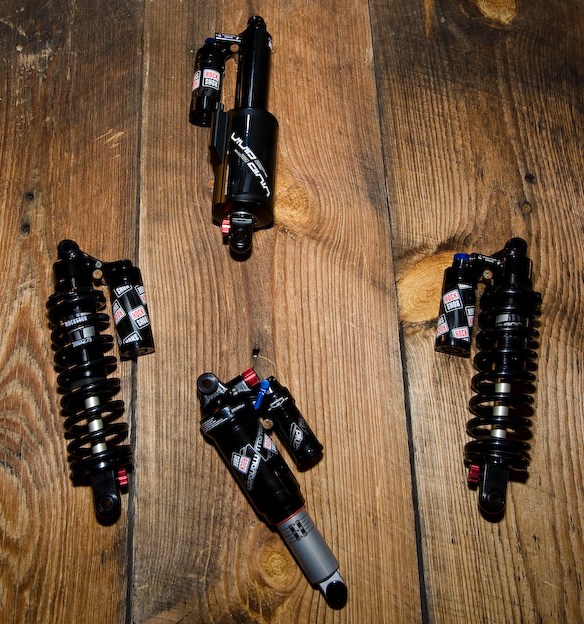

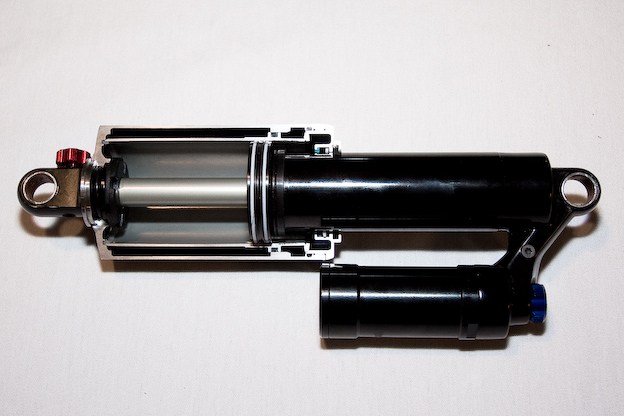
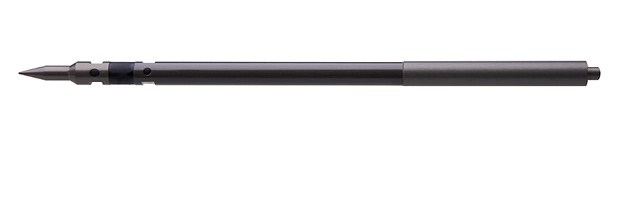
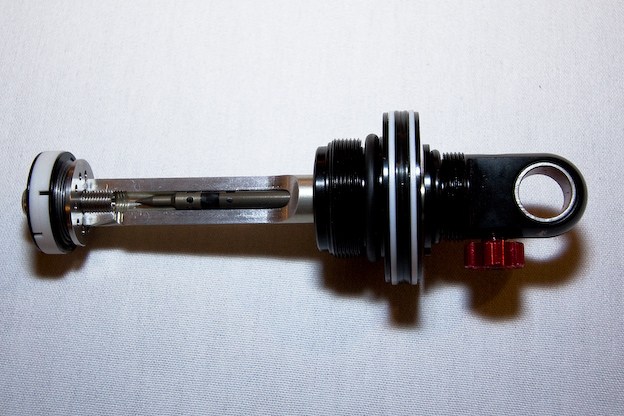
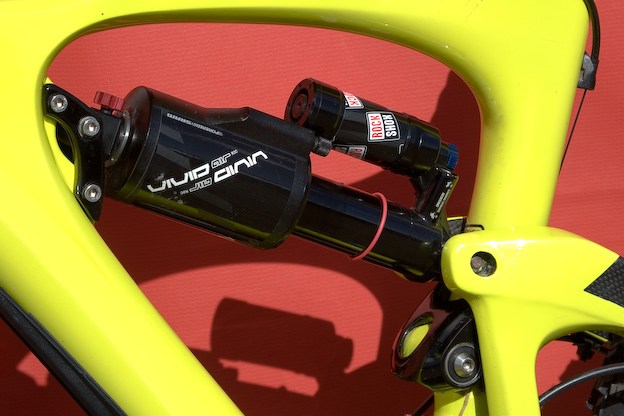
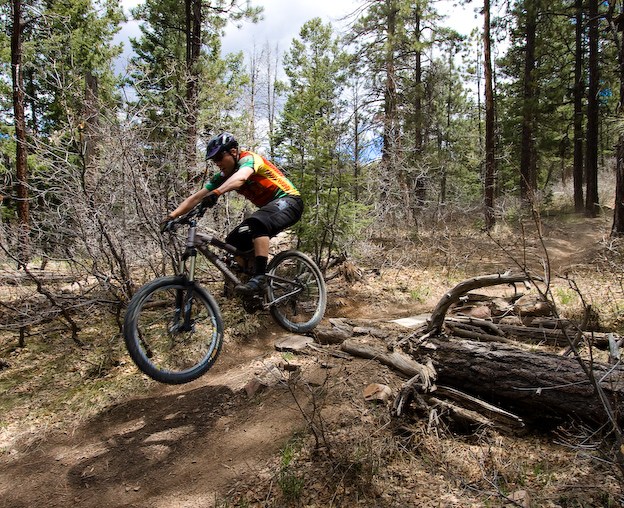
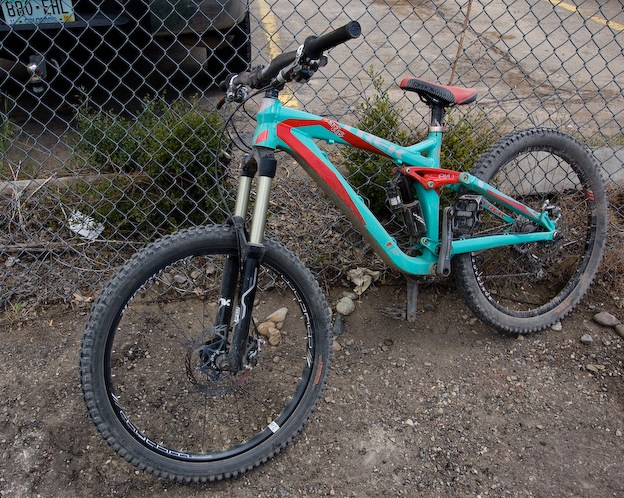
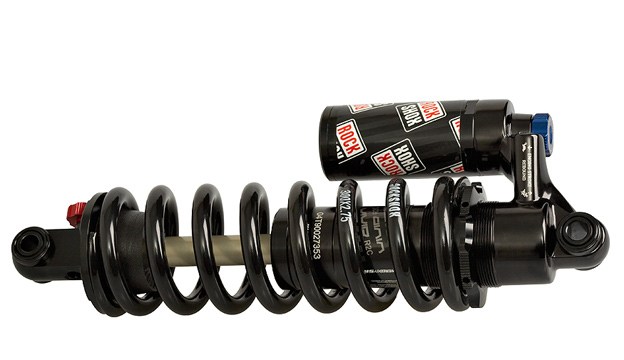
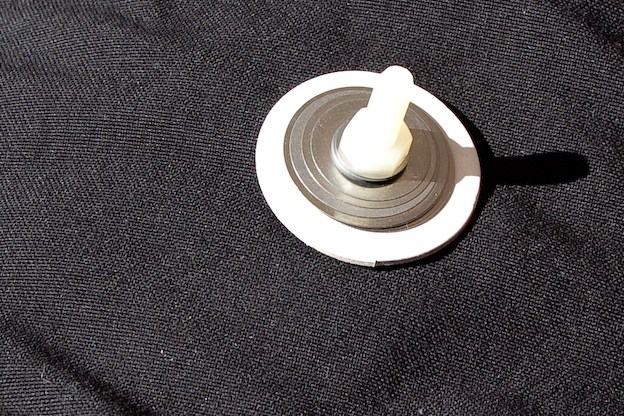
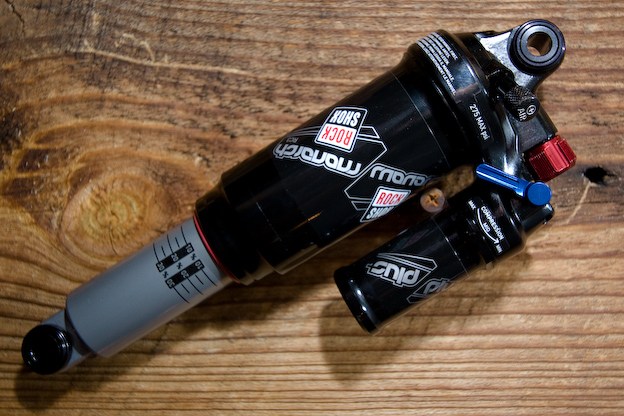
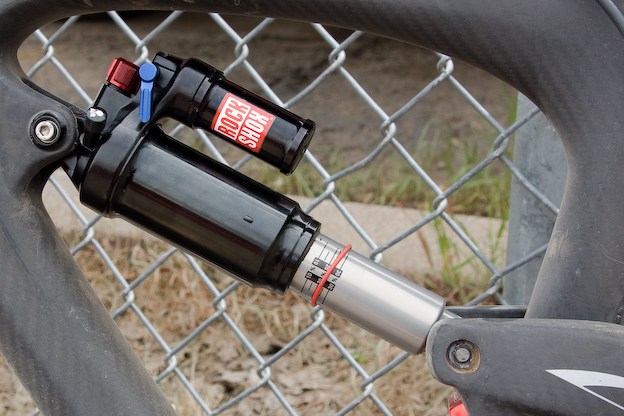







Comments
Please log in to leave a comment.